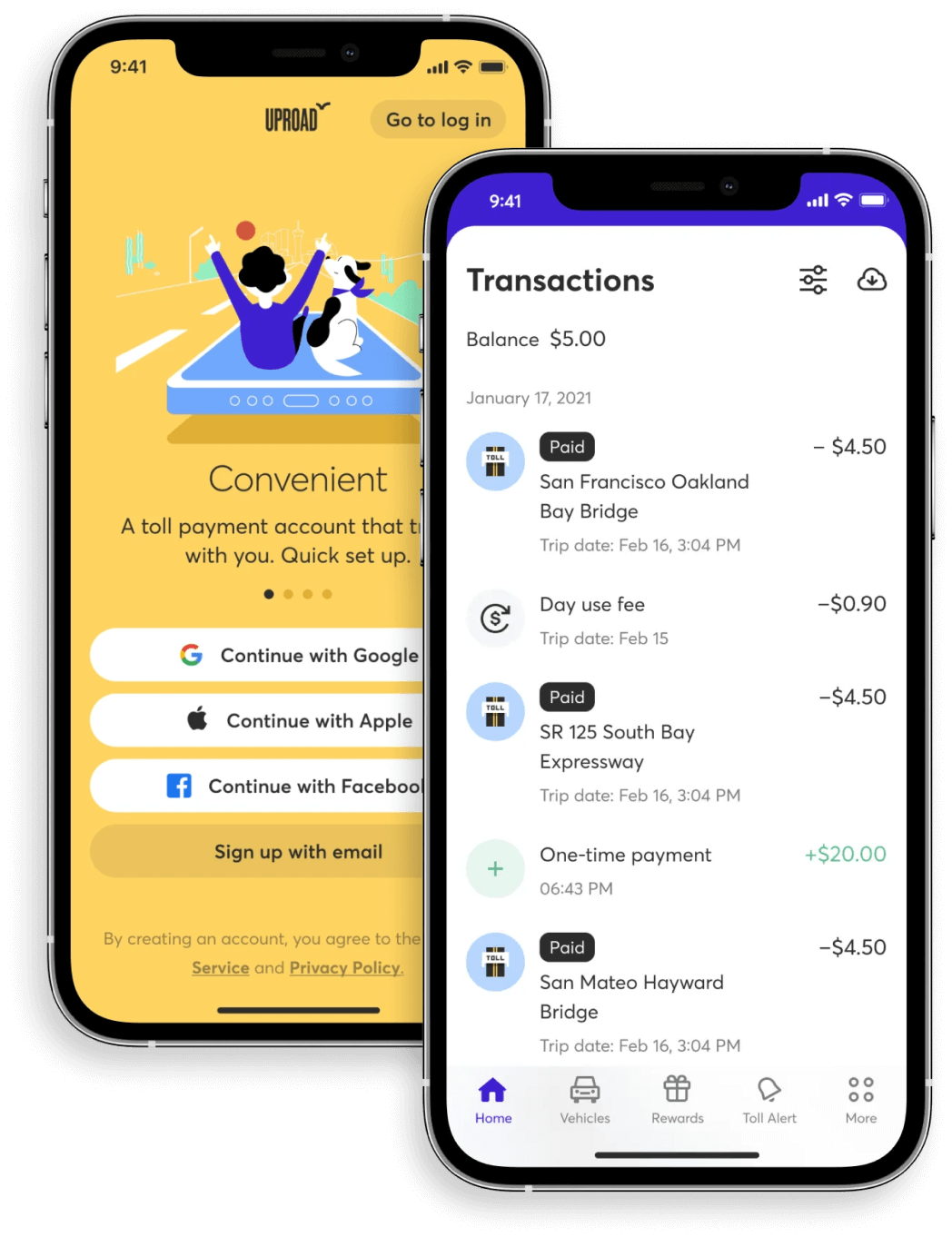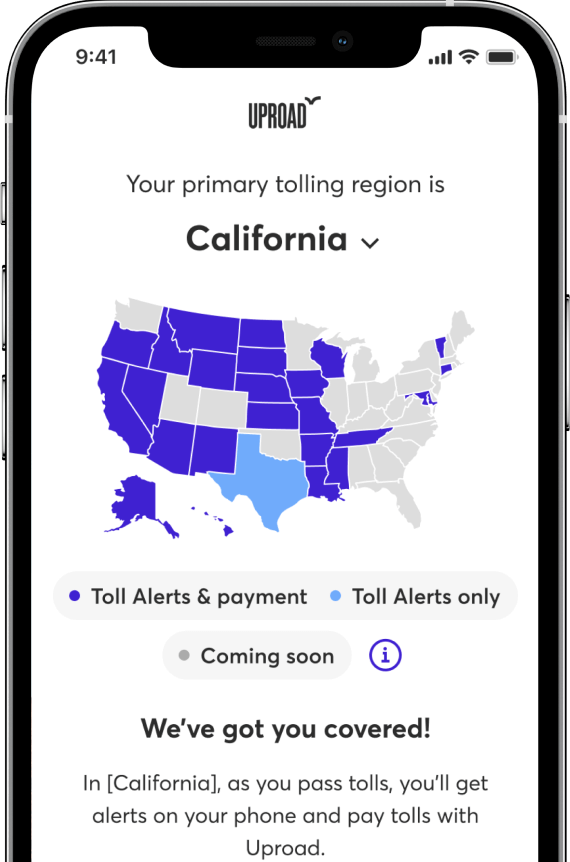

Uproad becomes #1 tolling app in the US
Mighty Digital partnered up with major B2G mobility solutions provider Kapsch Traffic to enter a US consumer tech market with
Uproad, a smart toll payment app. We joined at the very beginning and helped Uproad's team reach market fit, double activation
and retention rates, and scale coverage to 98% of all US toll locations.
Our Impact
We helped our client to design and evolve their growth strategy, and to establish a state-of-the-art growth infrastructure and data
culture within the team.
In partnership with the client's team, we reached the following goals:

3x gain in average user lifetime value

Fully comply with privacy regulations (CCPA)

2x increase in first and second-month retention rates

2x boost in onboarding conversion rate on a scale of hundreds of thousands of users

Solved early market-fit problems that dramatically increased user retention rates

Built solid growth infrastructure and operations; established an all-pervading data culture

Main Challenges

Our client wanted to get into the B2C business by building an app that helps pay for all US tolls. It was a challenge itself because there was no similar app due to the market features.
When we joined the project, the post-product launch retention rates were low and declining. Moreover, the average cost per user
acquired was huge.
We also observed plenty of negative reviews. However, the app ratings were not that bad. Diving deeper into the issue, our team realized that the users who enjoyed the app did not provide any input. Obviously, it resulted in demotivation within the corporate environment.
We also observed plenty of negative reviews. However, the app ratings were not that bad. Diving deeper into the issue, our team realized that the users who enjoyed the app did not provide any input. Obviously, it resulted in demotivation within the corporate environment.
There were no vendors we found in Eastern Europe with the depth of knowledge and experience Mighty Digital brought to the table. They
have a Western sensibility to digital growth we admired.
VP of Engineering & Operations, Uproad


The Solution

We started by building a state-of-the-art growth stack to capture user behavior, marketing attribution data, qualitative feedback, and a myriad of other dimensions, all ending up in the company data warehouse.
Right after its launch, we started getting the anticipated signals from users and interpreting them. So the team was able to
readjust the product and marketing strategy several times before getting to the product-market fit phase.
Once we got our initial traction, the team threw all its resources toward user activation. Having both behavioral and qualitative data in hand through a series of meticulously designed experiments, we reached a 2.5x increase in user activation rates.
Once we got our initial traction, the team threw all its resources toward user activation. Having both behavioral and qualitative data in hand through a series of meticulously designed experiments, we reached a 2.5x increase in user activation rates.
The next major problem was retention. In those days, we were looking just to reach the retention plato, so we would have a foundation for userbase growth.
First of all, we established the Net Promoter Score collection and built multiple flows to work with the user feedback. One of the
simplest but super effective exercises was streaming individual NPS responses, with an anonymous view of user actions within the
product, to a separate Slack channel. Over the course of several weeks, nearly every team representative – product, operations,
engineering, and support – was discussing each of the issues, one by one. Also, with the NPS, we made our happy users finally speak
up. Their sentiment provided powerful input for the new marketing campaigns.
At the same time, we sought to identify loyal audiences by leveraging mParticle. Once we identified multiple personas of power users, we helped the marketing team increase the share of those user groups via audience/lookalike building, which we saw, in no time, being reflected on the Average User Lifetime Value and Return on Advertising Spend as a result.
At the same time, we sought to identify loyal audiences by leveraging mParticle. Once we identified multiple personas of power users, we helped the marketing team increase the share of those user groups via audience/lookalike building, which we saw, in no time, being reflected on the Average User Lifetime Value and Return on Advertising Spend as a result.


Our next step was to construct a growth framework. It would allow the team to systematically identify, prioritize, and correct issues related to the product experience.
To address compliance demands, we built a secure automated solution to handle all policies related to in-storage data. At the same
time, this implementation has allowed the support team to focus on the customer and leave any privacy-related requests to automated
processing.
During our three years working with the client, we've hit some rough patches along the way. We've really maneuvered around all kinds of potential early-stage startup mistakes. The primary challenge has been to reduce the high cost of user acquisition. New privacy regulations have made this effort much more problematic.
We've also encountered multiple issues with a set of recently developed manual pipelines. However, this has only fueled our motivation to change the game. We switched to Fivetran, bringing data quality to a new level, and oh, as a bonus, our engineers were able to sleep better.
During our three years working with the client, we've hit some rough patches along the way. We've really maneuvered around all kinds of potential early-stage startup mistakes. The primary challenge has been to reduce the high cost of user acquisition. New privacy regulations have made this effort much more problematic.
We've also encountered multiple issues with a set of recently developed manual pipelines. However, this has only fueled our motivation to change the game. We switched to Fivetran, bringing data quality to a new level, and oh, as a bonus, our engineers were able to sleep better.
Since our launch, we have leaned heavily on the growth platform Mighty Digital built to help guide every aspect of our data-driven
growth and product strategy.
VP of Engineering & Operations, Uproad

















